Genre: Educational Developer: Sega of America Publisher: Sega of America Players: 1 Released: 1994
I would have never made it through junior high without Compton’s Interactive Encyclopedia. I’m joking of course, but that was more or less the intention of the whole Edutainment fad in the early days of CD-ROM media. In a society where the brains of children would supposedly rot after an hour of Sonic The Hedgehog play, game developers like The Learning Company were there to save the youth and single-handedly bring back smart. Unfortunately, this was another idea that was better in theory than in practice. People that are fifteen years removed from the time that Compton’s was released will find it an antiquated representation of the early digital age. A low resolution, slow moving, cumbersome navigating old CD-ROM is a tough thing to defend.
Compton’s is divided into four sections that appear at the select menu. The first selection is called Articles and provides the bulk of the disc’s qualities. From Aachen to Zygote, this contains all 34,000 articles from the book volume version of the encyclopedia. It is still amazing that that kind of information (twenty-eight volumes according to the back of the jewel case) can fit onto one Compact Disc. The interface is simple: you move the cursor (in the form of pointed hand around) and select articles with the A button. The loading times are surprisingly quick and there is an alphabet box that allows you to search and skip through fairly efficiently. Some entries are longer than others and there are many interesting subjects that I had never heard of to meander through. What really hinders the control is that the mouse pointer moves at a snail’s pace and can only be controlled with the game pad. Mega Mouse support would have been a blessing but none was built in.
The next section is devoted to pictures that correspond to about one tenth of the articles. Although the color limitations of the Sega CD are apparent here, some photos are surprisingly clear while others are unbearably grainy and dithered. The pictures that are output in grayscale generally look better than their color counterparts. A portrait of James Madison only had slight grain compared to photograph of a San Francisco cityscape, which was virtually indecipherable. In addition to a direct link to the article there is also a caption button which provides a short description followed by photography credit.
The third section encompasses some PCM sounds. The qualities of these are surprisingly low considering the format but I assume that the compression had to be high enough in order to stuff that much information on the compact disc. There are excerpts from performances of famous composers like Mozart and Beethoven, speeches from John F. Kennedy, and stock recordings of birds chirping and Geiger counters crackling. This just seems to be an expandable version of the picture section, which also includes clickable captions that pop up to further describe the sounds and their context.
The final section was supposed to be the title’s main attraction, thirty videos which would make the ultimate multimedia experience. Unfortunately, more than half of them are simply slide shows with a voice-over. There are a few which are actually video; like the entry for Civil Rights. We are treated to a grainy black and white video of stock footage taken during the civil rights marches in the ’60s. The video is about fifteen frames per second and takes up about 25% of the screen, centered. The developers should have trimmed some of the fat off of the articles and sounds sections and concentrated more on the video part because it looks low budget, even for the Sega CD. They should have known that the main reason this disc would be used would be for the multimedia section. The Learning Company seems to have done this on later PC versions and the version for Philips CD-i.
Even with all the problems of interface and the Sega CD’s color limitations, I actually enjoyed perusing the disc for about two hours. I think I would have accessed it often back in 1994 if I had a Sega CD. Many people would rate a title, like Compton’s, a big fat goose egg without thinking twice about it. They would say it is boring or that it isn’t really a game and therefore has no place on a game console like the Sega CD. They would be right about the later: it isn’t a game. However, Compton’s is not boring at all unless you think that reading about history, philosophy, and metaphysics is boring. The interface is clunky but the meat and potatoes of knowledge are still there. Put in the perspective of its time, Compton’s Encyclopedia is worthy of a second look.
SCORE: 5 out of 10

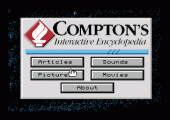
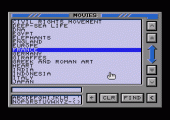
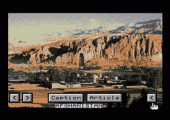

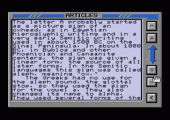


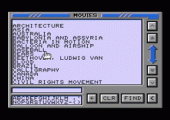
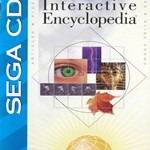
the conclusion to this review is spot on, if you’re expecting a game then you’ll be let down-but if you want to learn something then check it out.